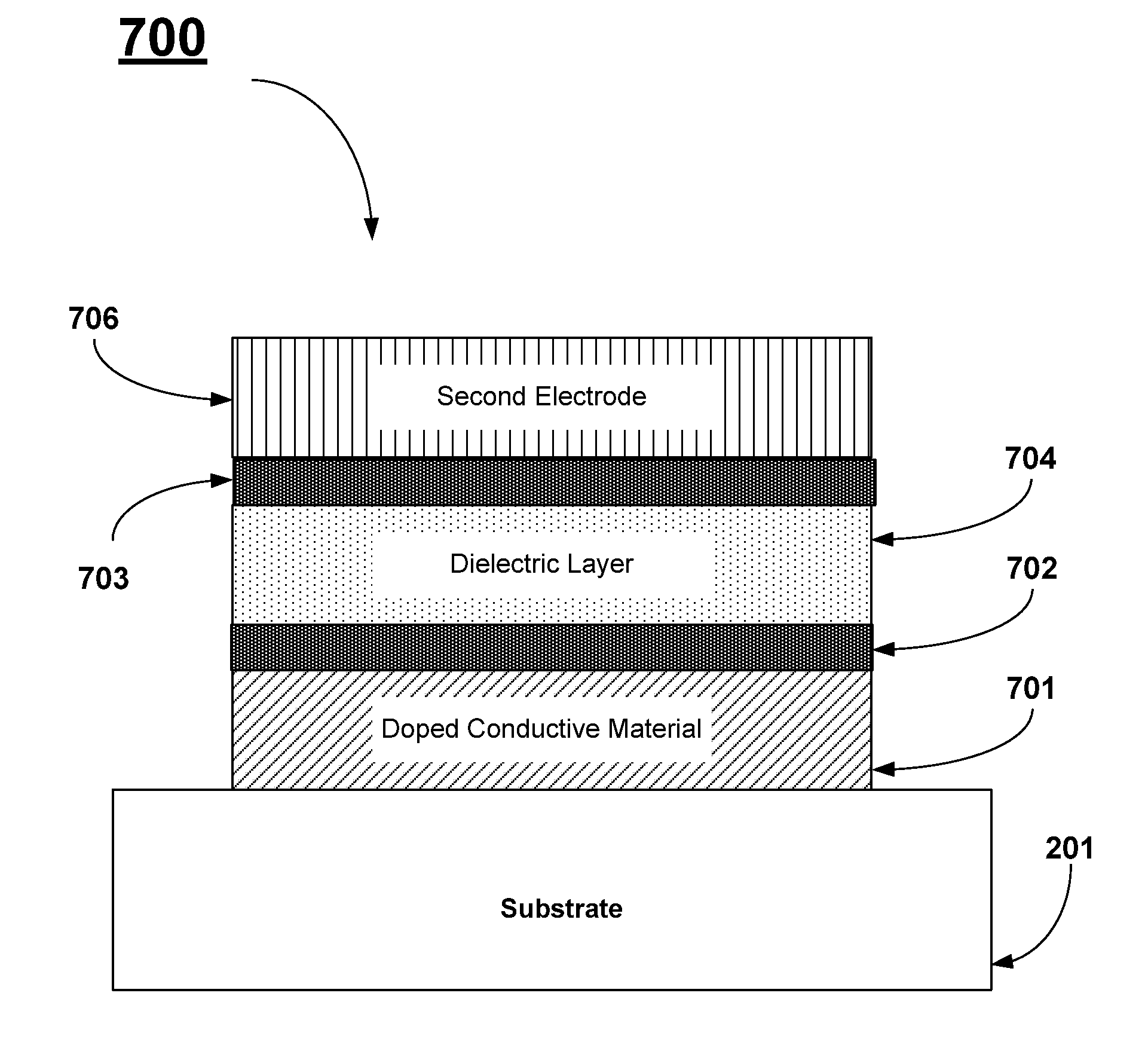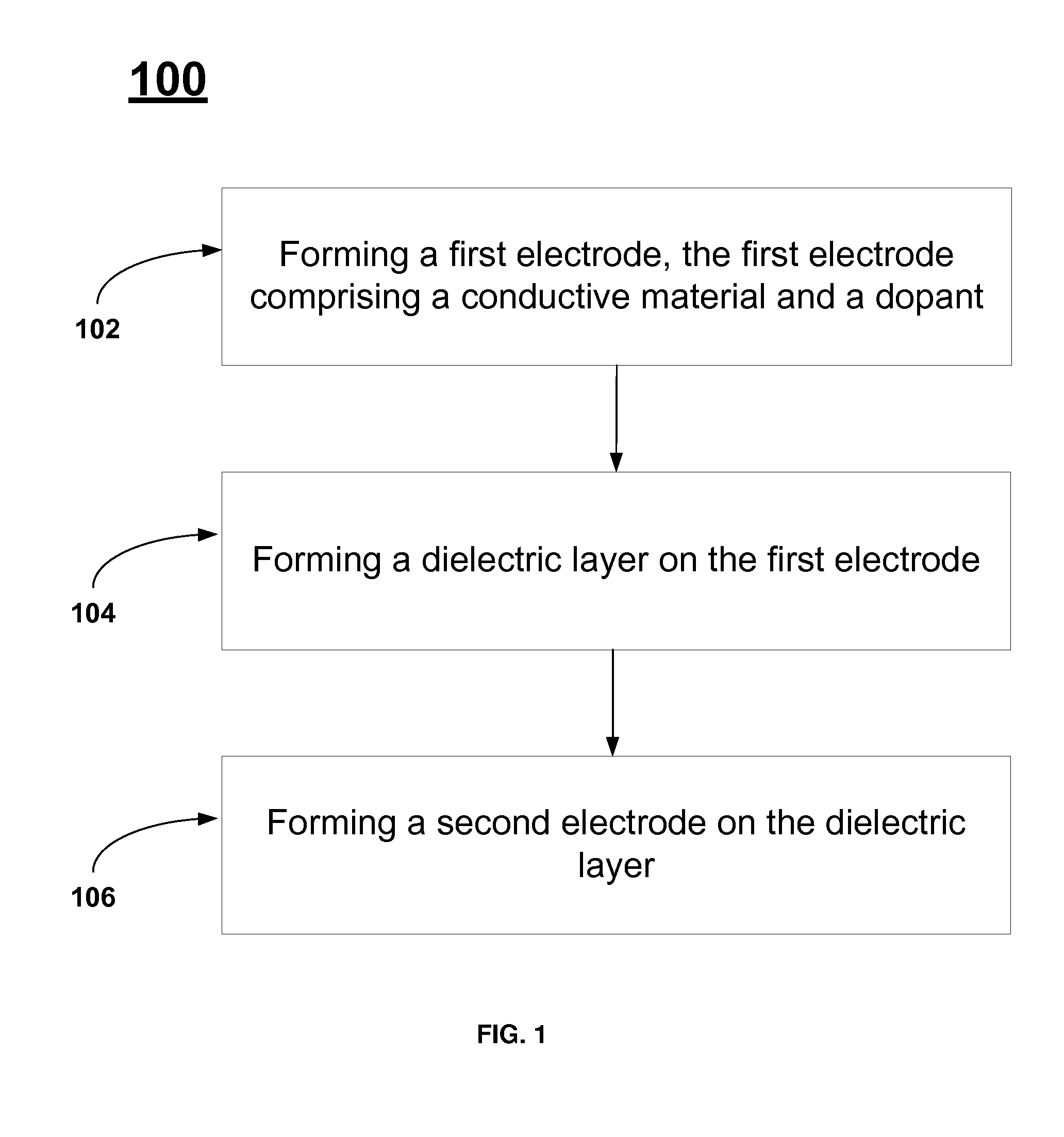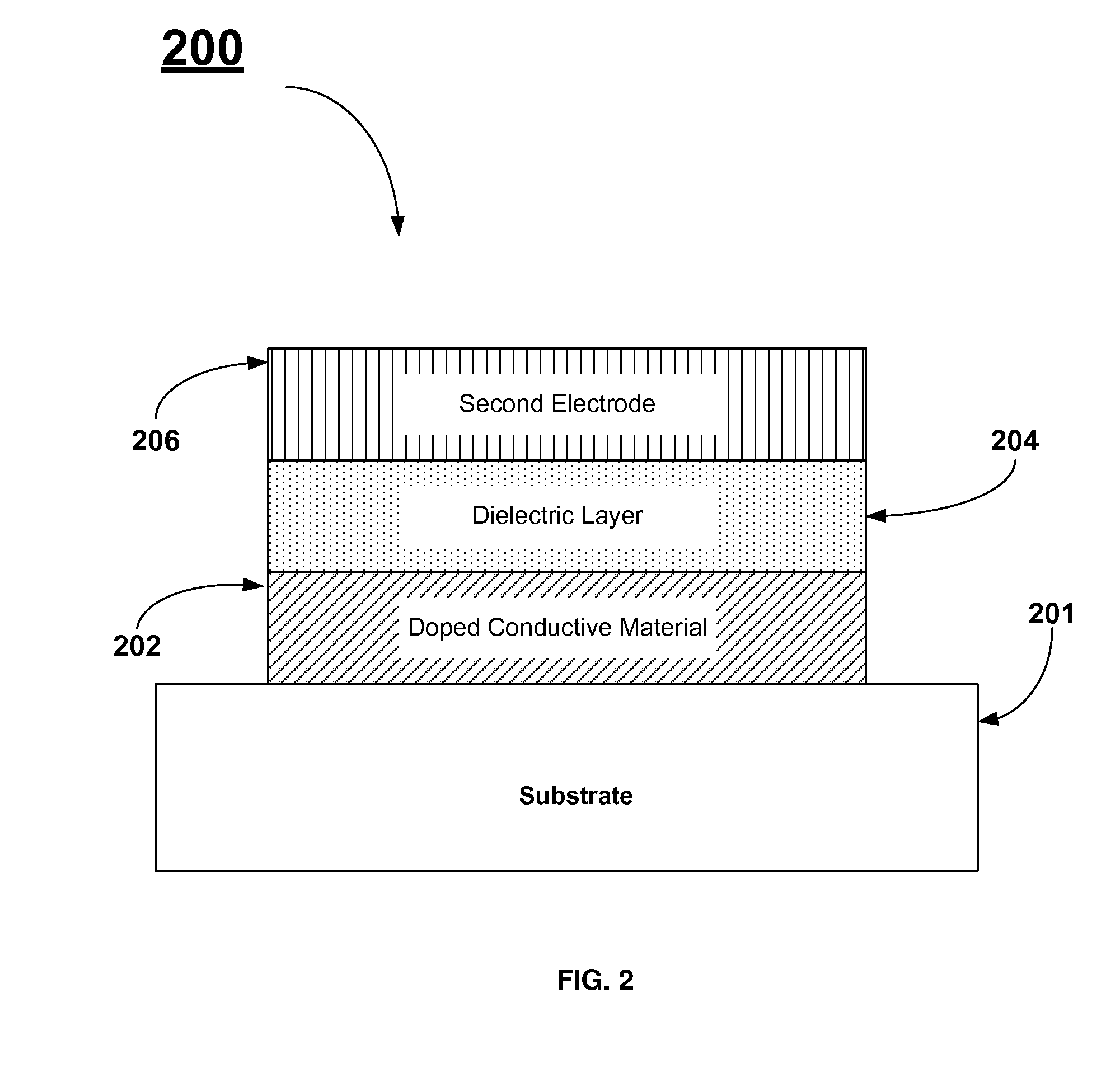Method for fabricating a dram capacitor having increased thermal and chemical stability
a dram capacitor and thermal and chemical stability technology, applied in the field of dynamic random access memory, can solve the problems of large leakage current in the capacitor stack implementing high-k dielectric materials, undesirable high temperature processes in the manufacture of dram devices, and large leakage current in the capacitor stack
- Summary
- Abstract
- Description
- Claims
- Application Information
AI Technical Summary
Benefits of technology
Problems solved by technology
Method used
Image
Examples
Embodiment Construction
[0029]It is to be understood that both the foregoing general description and the following detailed description are exemplary and explanatory only and are not necessarily restrictive of the invention as claimed. The accompanying drawings, which are incorporated in and constitute a part of the specification, illustrate embodiments of the invention and together with the general description, serve to explain the principles of the invention. Reference will now be made in detail to the subject matter disclosed, which is illustrated in the accompanying drawings.
[0030]FIG. 1 describes a method, 100, for fabricating a DRAM capacitor stack. The initial step, 102, comprises forming a first electrode layer. Examples of suitable electrode materials comprise conductive metal oxides, conductive metal silicides, conductive metal nitrides, and combinations thereof. A particularly interesting class of materials is the conductive metal oxides. Generally, these conductive metal oxide materials also co...
PUM
| Property | Measurement | Unit |
|---|---|---|
| cell capacitance | aaaaa | aaaaa |
| physical thickness | aaaaa | aaaaa |
| physical thickness | aaaaa | aaaaa |
Abstract
Description
Claims
Application Information
 Login to View More
Login to View More - R&D
- Intellectual Property
- Life Sciences
- Materials
- Tech Scout
- Unparalleled Data Quality
- Higher Quality Content
- 60% Fewer Hallucinations
Browse by: Latest US Patents, China's latest patents, Technical Efficacy Thesaurus, Application Domain, Technology Topic, Popular Technical Reports.
© 2025 PatSnap. All rights reserved.Legal|Privacy policy|Modern Slavery Act Transparency Statement|Sitemap|About US| Contact US: help@patsnap.com



